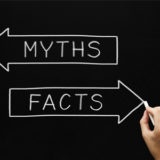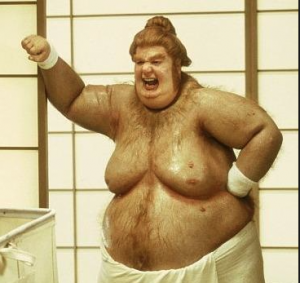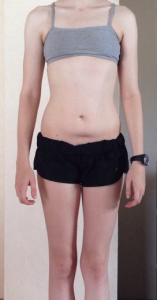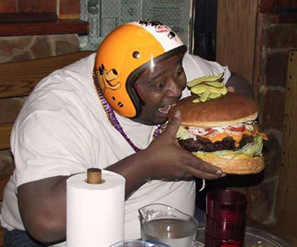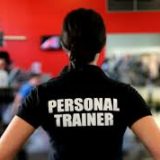
When it comes to burning fat, the fitness world often debates between two popular types of exercise: Low-Intensity Steady State (LISS) and High-Intensity Interval Training (HIIT). Both have their advocates and benefits, but which one truly reigns supreme in the quest for fat loss? In this article, we’ll dive deep into the mechanics, benefits, and considerations of LISS and HIIT, helping you determine which is best for your personal training goals.
Low-Intensity Steady State (LISS) Exercise?
LISS exercise involves performing aerobic activities at a low to moderate intensity for a prolonged period. Common examples include brisk walking, cycling, swimming, or jogging at a steady pace. Typically, LISS workouts last anywhere from 30 to 60 minutes.
Benefits of LISS:
- Accessibility: LISS exercises are easy to perform and don’t require advanced fitness levels or specialized equipment.
- Lower Risk of Injury: Due to its low intensity, LISS reduces the risk of injury, making it suitable for beginners and those recovering from injuries.
- Improved Endurance: Consistent LISS workouts enhance cardiovascular endurance and overall aerobic capacity.
- Stress Reduction: The steady, rhythmic nature of LISS can help reduce stress and improve mental well-being.
Fat Burning with LISS:
LISS primarily uses fat as a fuel source during the workout. Since the intensity is low, the body relies more on fat oxidation compared to carbohydrates. However, the total calorie burn may be lower compared to higher-intensity workouts.
What is High-Intensity Interval Training (HIIT)?
HIIT involves alternating between short bursts of intense exercise and periods of rest or low-intensity exercise. A typical HIIT session lasts between 20 to 30 minutes and can include activities like sprinting, cycling, or bodyweight exercises performed at maximum effort.
Benefits of HIIT:
- Time Efficiency: HIIT workouts are shorter, making them ideal for those with busy schedules.
- Increased Caloric Burn: HIIT can burn a significant number of calories in a short period and continues to burn calories post-workout through the EPOC (Excess Post-Exercise Oxygen Consumption) effect.
- Improved Cardiovascular Health: HIIT enhances cardiovascular fitness and can improve heart health more rapidly than steady-state cardio.
- Metabolic Boost: HIIT increases metabolic rate, which can aid in fat loss and muscle preservation.
Fat Burning with HIIT:
HIIT primarily burns carbohydrates during the intense phases of the workout. However, the afterburn effect (EPOC) ensures that the body continues to burn fat for hours after the workout. This makes HIIT highly effective for overall fat loss.
LISS vs. HIIT: Which is Better for Burning Fat?
Both LISS and HIIT have their unique advantages when it comes to burning fat. The best choice depends on individual preferences, fitness levels, and goals.
Factors to Consider:
- Fitness Level: Beginners may find LISS more manageable, while those with a higher fitness base might benefit more from the intensity of HIIT.
- Time Availability: If you’re short on time, HIIT offers a more efficient way to burn calories and fat.
- Sustainability: Consistency is key for fat loss. Choose the type of exercise you’re more likely to stick with in the long term.
- Joint Health and Injury Risk: Those with joint issues or injuries may prefer LISS due to its lower impact on the body.
Combining LISS and HIIT:
For optimal fat loss and overall fitness, incorporating both LISS and HIIT into your routine can be highly effective. This approach allows you to enjoy the benefits of both exercise types while preventing burnout and overtraining.
Conclusion:
In the battle of LISS vs. HIIT for fat burning, there is no one-size-fits-all answer. Both have proven to be effective in their own right. LISS offers a low-impact, accessible option that burns fat during exercise, while HIIT provides a time-efficient, high-intensity alternative that continues to burn fat long after the workout is over. Ultimately, the best exercise for burning fat is the one that fits your lifestyle, preferences, and fitness level, ensuring you stay consistent and motivated on your journey to better health.
For personalized training plans and expert guidance, consider consulting with a certified personal trainer who can tailor a program to your specific needs and goals.
Optimize Your Fat Loss Journey with Personal Training:
Looking to maximize your fat loss and achieve your fitness goals? Contact us today to schedule a consultation with John Turk, San Diego’s top personal trainer for aging professionals wanting to get their body back. Whether you prefer the steady pace of LISS or the intense bursts of HIIT, we’ll create a customized plan that works for you.
Call 858-877-1370 or Visit us at www.PersonalTrainerSanDiego.com to Get Started!

